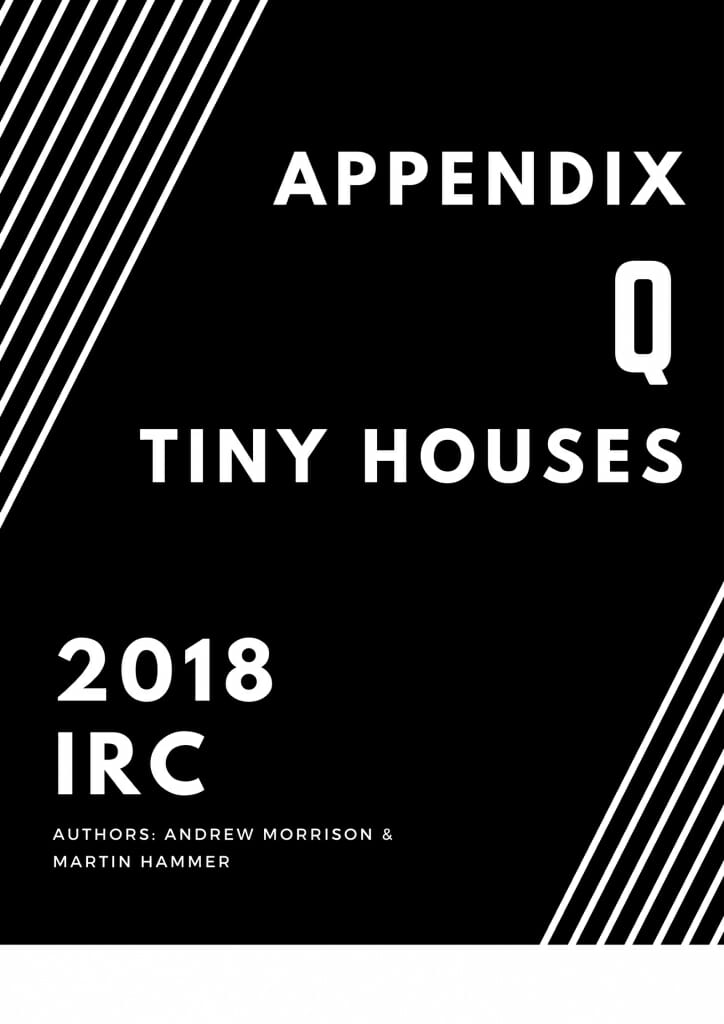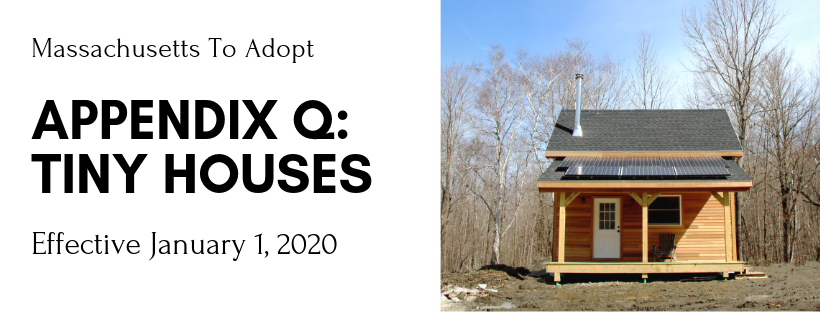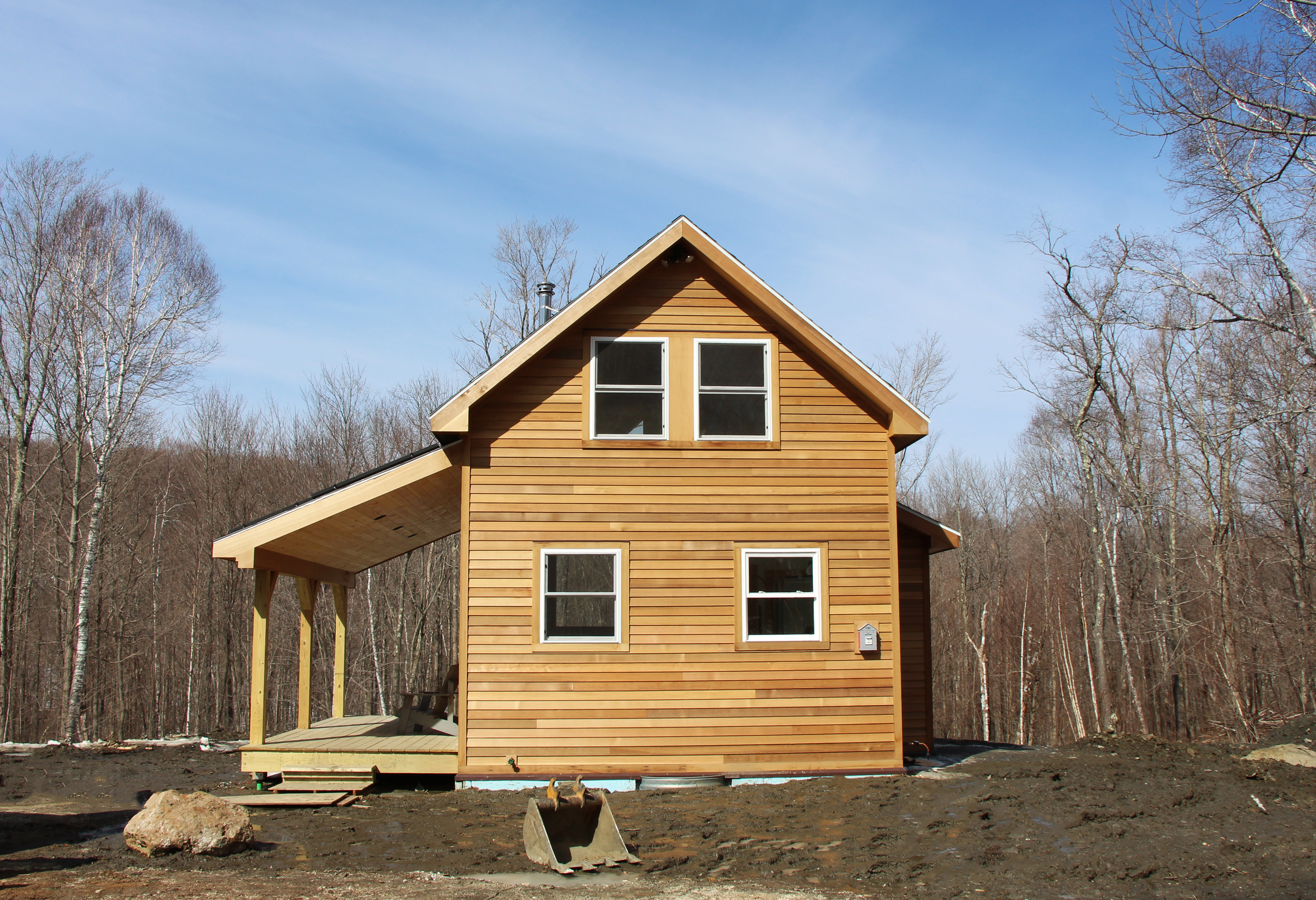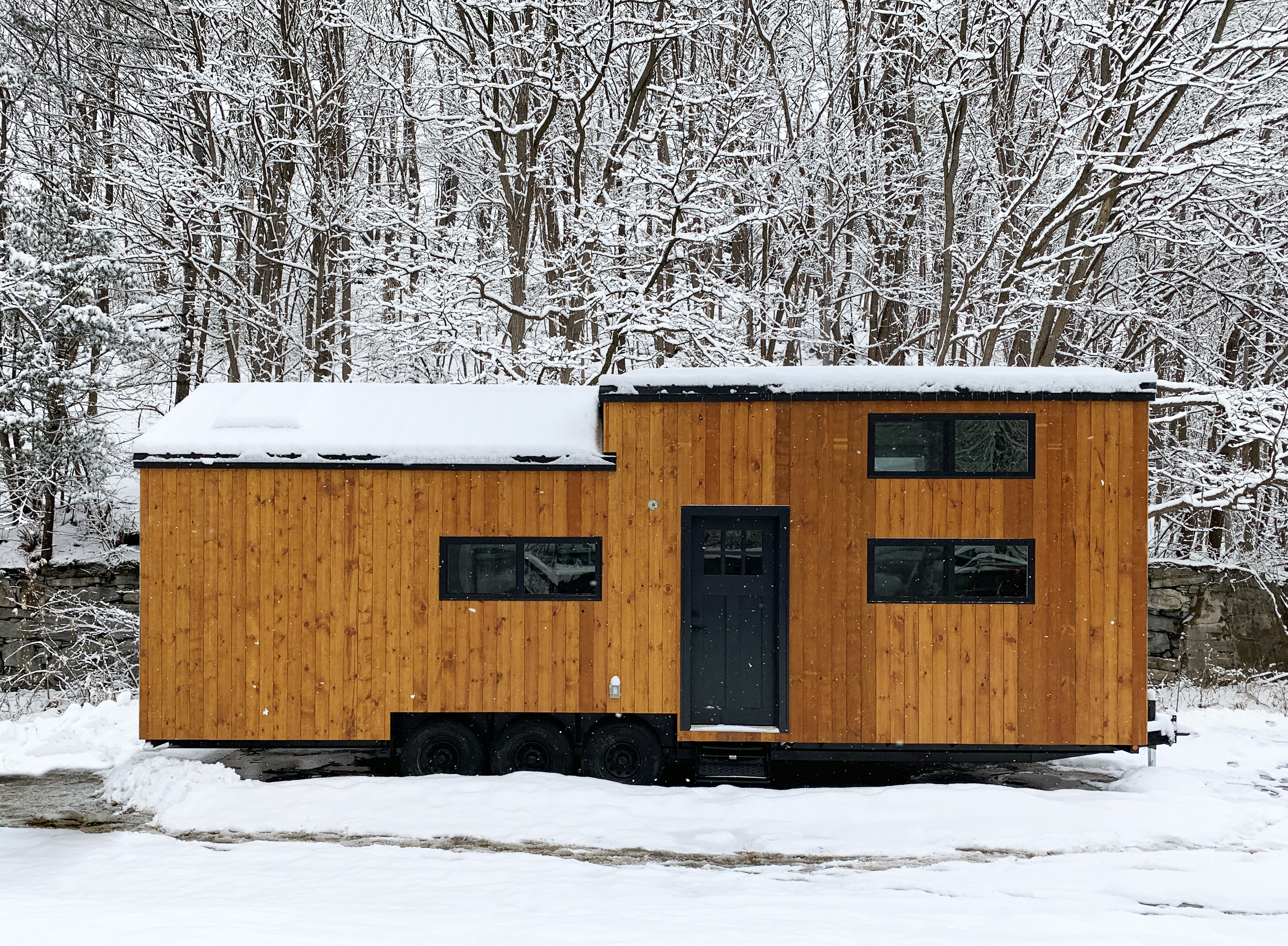The Tiny House Appendix will become official in Massachusetts in January 2020.
The newest complete edition of the MA Building Code will be released in 2021. However, effective 1/1/2020, Appendix Q, also known as the Tiny House Appendix, is anticipated to be adopted into the current Massachusetts state building code.
From a letter by John Nunnari, Executive Director of the Massachusetts Chapter of the American Institute of Architects:
“The BBRS… voted to bundle a package of previous approved amendments intended for incorporation into the current 9th edition of the state building code.
It is anticipated that these amendments will become effective on January 1, 2020, and they include, but are not limited to, the following:
- Adoption of 2018 IECC with MA amendments – including updates to the stretch energy code, new lighting power density requirements and incorporation of new EV- charging requirements for commercial project;
- Revisions to Chapter 110.R3 manufactured building program;
- Adoption of ICC’s 2018 base residential code Appendix Q pertaining to Tiny Houses;
- New language outlining code requirements for the creation of micro-housing dwelling units within apartment and condominium buildings
 What is Appendix Q: Tiny Houses?
What is Appendix Q: Tiny Houses?
Appendix Q: Tiny Houses provides building safety standards for houses on foundations that are 400 sq. ft. and under. The Appendix pertains to the following aspects of designing a small or tiny house:
- Ceiling Height
- Loft Minimum Area, Height and Dimensions
- Loft Access:
- Stairway width, headroom, treads and risers, landing platforms, handrails and guards
- Ladder size, capacity, and incline
- Alternating tread devices
- Ship’s ladders
- Loft guards
- Emergency Escape and Rescue Openings
Read the entire text of Appendix Q: Tiny Houses here.
Timeline of the Advancement of Appendix Q
It’s been a long road in Massachusetts, full of starts, stops and quite a few government delays. But the hardest part is over and now other states should find it easier to adopt the Tiny House Appendix. On January 1, 2020, Massachusetts and California simultaneously will join Maine, Idaho, Oregon and Georgia as the first six states to adopt the Tiny House Appendix into their building code.
Update 8/21/09: Virginia will also be adding the appendix to their 2021 code.
Here’s how it happened:
August 2016: Andrew Morrison submitted a proposed tiny house appendix to the International Code Council (ICC).
January 31, 2016: The Tiny House Appendix was officially adopted into the International Residential Code (IRC) by the ICC. Now, it is up to each state to decide to adopt it into their own building code.
September 2017: Gabriella Morrison and Andrew Morrison traveled to Boston to present The Tiny House Appendix, then known as Appendix V, to the Massachusetts Board of Building Regulations and Standards. Jason at B&B Tiny Houses also testified to the BBRS. Letters of support came from the American Tiny House Association and many, many tiny house enthusiasts in Massachusetts.
May 14, 2018: Tiny House Appendix Q Is Being Considered For Massachusetts’ State Building Code: Here’s How You Can Help Massachusetts Board of Building Regulations and Standards (BBRS), at its regular monthly meeting, addressed Proposal Number 5-2-2018: “Consider adopting Appendix Q of the International Residential Code pertaining to Tiny Houses.”
July 12, 2018: Massachusetts BBRS Approves Tiny House Appendix: Here’s What’s Next After the BBRS approved the Appendix, it had to move through many state offices and be approved by each one.
September 5, 2018: Appendix Q “Tiny House Appendix” Advances in Massachusetts, August 2018. The Appendix was still moving though state offices, which was a good sign. However, by the winter of 2018 we hadn’t seen any forward movement in Massachusetts and we couldn’t get an answer from the BBRS about whether the Appendix would be propagated. In addition, there was a 35 day long government shutdown which we suspected may have hindered the progress of the Appendix.
January 22, 2019: Katie at B&B Tiny Houses worked with Massachusetts Senator Adam Hinds, Danielle Allard, Esq., the director of Budget & Policy for Sen. Hinds’ office, and the Massachusetts Smart Growth Alliance to find a solution. Together, we filed SD.1636, An Act relative to Tiny Homes to encourage the state of Massachusetts to adopt Appendix Q: Tiny Houses. Read the bill here.
June 11, 2019: The Massachusetts BBRS and Governor Baker’s administration vote to officially adopt the Tiny House Appendix into the Massachusetts Building Code.
January 1, 2020: Appendix Q will be in effect in Massachusetts.
Does The Adoption of Appendix Q Mean I Can Build A Tiny House Wherever I Want In Massachusetts?
Not quite! Every zone of every municipality in the state still has its own zoning bylaws. Therefore, you’ll need to contact your municipality to see if they’ll allow your tiny-house-on-a-foundation project. Here’s how.
We’re compiling a list of every municipality in Massachusetts’ attitude toward tiny houses on wheels and on foundations. It’ll always be a work in progress as we research more municipalities and as zoning rules change over time. If you have info to add to the list, please let us know!
Here’s what the Tiny House Appendix does mean for Massachusetts residents: wherever a house that’s 400 sq. ft. or under is allowed, there are now rules in place for how to build it safely and effectively. Before, small and tiny houses on foundations would have had to adhere to certain building codes that work well for large buildings but would have been impractical or impossible to follow in small spaces.
What’s the difference between zoning code and building code?
Building code provides a set of safety standards that new buildings must adhere to by law. These standards ensure the safety of the people using the building. There are separate building codes for residential buildings (like houses and apartment buildings) and all other buildings (like shops, factories, schools, and workplaces). The Tiny House Appendix is set to become part of the Massachusetts state building code, which is based on the International Residential Code.
Zoning code pertains to what types of buildings municipalities (cities and towns) allow, and where. Often a city or town has several different zones, and each zone has different rules. Zoning bylaws are decided by the zoning board of a city or town, and can be amended to better fit the needs of each city or town. Zoning boards generally have regular meetings that are open to the public, where the public can share their concerns, get clarification on what is allowed to be built, and request a change to the zoning bylaws to improve their municipality.
Appendix Q is part of the Massachusetts building code, and serves to legitimize tiny and small dwelling spaces in the eyes of local building inspectors and zoning boards. Municipalities that see there are ICC-approved codes to build tiny and small houses may be more inclined to adopt those types of homes into their zoning.
Left: Appendix Q applies to tiny houses on foundations that are 400 sq. ft. or under.
Right: Appendix Q does not apply to tiny houses on wheels.
How Does The Tiny House Appendix Relate To Tiny Houses On Wheels?
Currently, the Tiny House Appendix, or Appendix Q, only regulates houses that are permanently-affixed. It does not relate to tiny houses on wheels. However, there is a movement to create a new version of Appendix Q for tiny houses on wheels as well. Martin Hammer, Andrew Morrison, and Gabriella Morrison were instrumental in introducing Appendix Q to the International Building Code and then again to individual states including Massachusetts. See their website for more info on future plans for a tiny house on wheels appendix.


